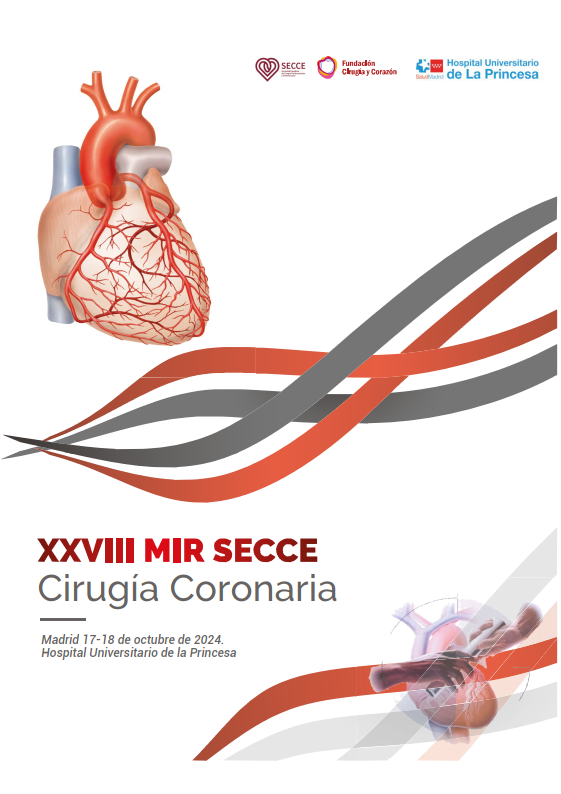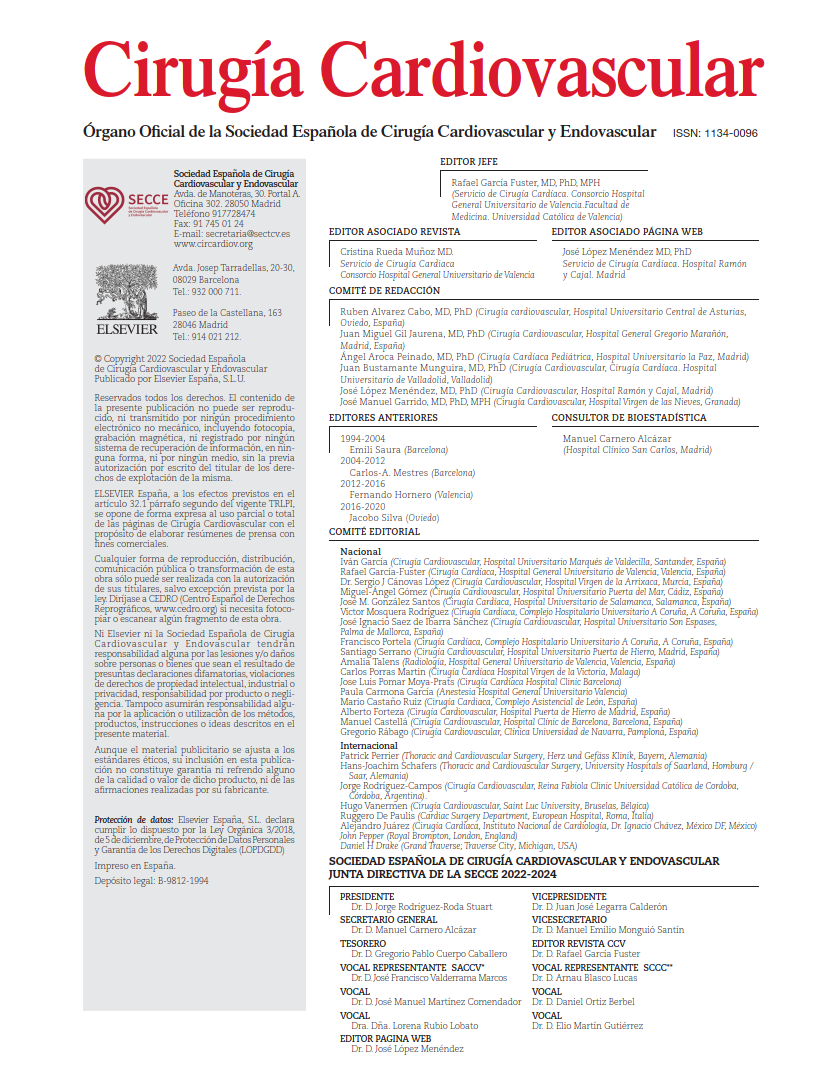The article entitled “Outcomes after hospital discharge in children requiring post-cardiotomy extracorporeal membrane oxygenation: A binational retrospective cohort study” addresses the issue of long-term follow-up in pediatric patients who underwent ECMO in the immediate postoperative period of cardiac surgery. While ECMO has become a cornerstone in the management of refractory cardiac or respiratory failure after surgery, its long-term impact in this population remains poorly characterized. To address this gap, the authors conducted a retrospective, multicenter, population-based study using data from the ANZCORS registry (Australia and New Zealand Congenital Outcomes Registry for Surgery). Their objective was to evaluate the clinical trajectory of these patients beyond the acute phase, with particular attention to post-discharge survival and persistent morbidity. The study aims to provide data relevant to clinical decision-making, long-term multidisciplinary follow-up, and family counseling in a highly complex clinical setting.
In recent years, extracorporeal membrane oxygenation has become an essential strategy for providing temporary cardiopulmonary support in critically ill pediatric patients after cardiac surgery. Its use has increased, as have expectations regarding its effectiveness. However, most of the available literature focuses on in-hospital outcomes, with limited information on the long-term trajectory of patients who survive and are discharged. What is their quality of life? How many develop long-term sequelae? What factors predict unfavorable outcomes?
The study by Crawford et al. reports the binational experience of 376 children under 18 years of age who required ECMO during the same hospitalization as their cardiac surgical procedure. This retrospective cohort study spans from 2013 to 2021 and includes long-term follow-up. Conditional survival among hospital survivors was 95.5% at 1 year, 87.1% at 5 years, and 81.9% at 8 years. However, overall 1-year mortality reached 38%, and 43% of survivors developed significant morbidity during follow-up.
Several factors were associated with adverse outcomes, including single-ventricle physiology, need for re-cannulation, prolonged ECMO support, and extended cardiopulmonary bypass duration. The subgroup with single-ventricle physiology was particularly vulnerable: patients requiring ECMO after Norwood-type procedures exhibited a 5-year survival of only 42.1%, with more than half of survivors presenting with major sequelae.
The authors conclude that, in Australia and New Zealand, although a considerable proportion of children requiring ECMO after cardiac surgery do not survive beyond the first year, those who overcome the initial hospitalization exhibit relatively high mid- and long-term survival. Nonetheless, nearly half of these survivors experience relevant morbidity, particularly those with single-ventricle physiology.
COMMENTARY:
ECMO remains an indispensable tool in the postoperative management of pediatric cardiac surgery. However, Crawford et al. offer a critical insight: survival alone is not enough. The high morbidity observed among survivors and the identification of risk factors associated with poorer outcomes should guide a more nuanced approach to the indication for ECMO.
Advances in surgical techniques, anticoagulation protocols, and specialized team experience have considerably expanded ECMO accessibility for children, regardless of their size or weight. These improvements have also broadened the scope of ECMO indications. In this context, numerous studies have examined ECMO outcomes and how to improve them, given that, as the authors emphasize, this support remains associated with substantial morbidity and mortality.
Multiple studies have explored ECMO indications in the pediatric postoperative setting. Pizarro et al. reported that, in Latin America, the most common ECMO indication in pediatric patients was postcardiotomy shock or hypoxemia. Similarly, Kumar et al. indicated that postcardiotomy ECMO in children was initiated due to failure to wean from cardiopulmonary bypass, low cardiac output syndrome, severe pulmonary hypertension, major bleeding, anaphylaxis, respiratory failure, or pulmonary edema. Varrica et al. also noted that primary ECMO triggers were failure to wean from bypass, low cardiac output syndrome, and extracorporeal cardiopulmonary resuscitation (E-CPR). Notably, in these reports, neither cardiac anatomy (e.g., single vs. biventricular physiology) nor previous ECMO use were considered exclusion criteria, despite their clear association with outcomes.
Regarding morbidity and mortality, ECMO is not without complications. Cerebral injury has been reported in up to 33% of these patients. Moreover, approximately 17% acquire at least one nosocomial infection during ECMO, translating to roughly 67 infections per 1000 days of support. These data are consistent with the findings of Crawford et al., who emphasized the high morbidity burden among survivors.
The literature reinforces the importance of identifying prognostic factors to guide ECMO use. In the Crawford et al. study, poor outcomes were associated with single-ventricle physiology, re-cannulation, prolonged ECMO duration, and extended cardiopulmonary bypass times—findings that align with prior knowledge. Elmahrouk et al. similarly identified ECMO duration, renal failure, and stroke as risk factors for in-hospital mortality, whereas patient age and aortic cross-clamp time were not statistically significant.
In conclusion, improving survival rates among pediatric ECMO recipients requires re-evaluation of the criteria for its use, establishing more precise indications, fostering close communication and collaboration among all members of the multidisciplinary team, and accumulating technical expertise in the management of this support. It is equally critical to consider early ECMO implementation when indicated, following careful patient stratification, always bearing in mind the substantial risks involved. In this context, refining the criteria for relative or absolute contraindications is also essential—assessing not only the potential for hemodynamic recovery but also the likelihood of achieving an acceptable quality of life after the critical event. Decision-making must be guided by an ethical, patient-centered approach that considers not only clinical outcomes but also the long-term functional, neurological, and emotional impact. This approach will allow optimization of results in these children without losing sight of the quality of life that awaits survivors in the long term.
REFERENCES:
Crawford L, Marathe SP, Betts KS, Karl TR, Mattke A, Rahiman S, et al.; ANZCORS Collaborative; Outcomes after hospital discharge in children requiring post-cardiotomy extracorporeal membrane oxygenation: A binational retrospective cohort study. J Thorac Cardiovasc Surg. 2025 Jun;169(6):1548-1558.e5. doi: 10.1016/j.jtcvs.2024.11.016.
Pizarro C, Bermon A, Plata Vanegas S, Colmenares-Mejia C, Poveda CM, Gómez Gutiérrez RD, et al. Experience with extracorporeal membrane oxygenation support in Latin America between 2016 and 2020. Med Intensiva (Engl Ed). 2025 May;49(5):502129. doi: 10.1016/j.medine.2025.502129.
Kumar A, Raj S, Singh S, Ghotra GS, Tiwari N. Empowering Little Fighters: Post-Cardiotomy Pediatric ECMO and the Journey to Recovery. Ann Card Anaesth. 2024 Apr 1;27(2):128-135. doi: 10.4103/aca.aca_184_23.
Varrica A, Cotza M, Rito ML, Satriano A, Carboni G, Saracino A, et al. Post cardiotomy extracorporeal membrane oxygenation in pediatric patients: Results and neurodevelopmental outcomes. Artif Organs. 2024 Dec;48(12):1525-1535. doi: 10.1111/aor.14842.
Fu KX, MacLaren G. Infectious Complications of Postcardiotomy Extracorporeal Membrane Oxygenation. Pediatr Crit Care Med. 2020 Nov;21(11):1019-1020. doi: 10.1097/PCC.0000000000002447.
Herrup EA, Yuerek M, Griffis HM, Connelly JT, Thiagarajan R, Rycus P, et al. Hospital-Acquired Infection in Pediatric Subjects With Congenital Heart Disease Postcardiotomy Supported on Extracorporeal Membrane Oxygenation. Pediatr Crit Care Med. 2020 Nov;21(11):e1020-e1025. doi: 10.1097/PCC.0000000000002409.
ElMahrouk AF, Ismail MF, Hamouda T, Shaikh R, Mahmoud A, Shihata MS, et al. Extracorporeal Membrane Oxygenation in Postcardiotomy Pediatric Patients-15 Years of Experience Outside Europe and North America. Thorac Cardiovasc Surg. 2019 Jan;67(1):28-36. doi: 10.1055/s-0037-1608962.



